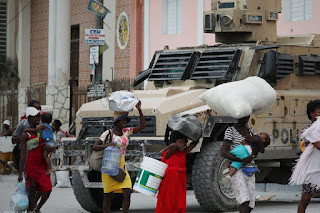Human Rights and Biodiversity: Key UN Biodiversity Summit Opens in Colombia
The UN biodiversity summit, formally known as COP16 (the 16th Conference of Parties to the UN Biodiversity Convention), officially commenced in Cali, Colombia, on Monday. With approximately 15,000 participants, including heads of state, 103 ministers, and over 1,000 international journalists, this summit represents a pivotal moment for global efforts to safeguard our planet’s biodiversity.
As the most significant gathering for biodiversity conservation worldwide, COP16 aims to chart a safe and effective course for environmental protection. The summit operates under the guidance of the Kunming-Montreal Biodiversity Framework (GBF), a groundbreaking plan that emerged from COP15 in Canada. This framework sets ambitious goals to halt and reverse biodiversity loss by 2030, emphasizing the need for international collaboration and robust environmental policies.
As the most significant gathering for biodiversity conservation worldwide, COP16 aims to chart a safe and effective course for environmental protection. The summit operates under the guidance of the Kunming-Montreal Biodiversity Framework (GBF), a groundbreaking plan that emerged from COP15 in Canada. This framework sets ambitious goals to halt and reverse biodiversity loss by 2030, emphasizing the need for international collaboration and robust environmental policies.
The Interconnection Between Human Rights and Biodiversity
The relationship between human rights and biodiversity is profound and multifaceted. The enjoyment of many human rights is fundamentally tied to the health of our ecosystems. Rights to food, clean air, health, culture, and even life itself are intrinsically linked to thriving biodiversity. Healthy ecosystems provide vital services such as clean water, pollination of crops, and regulation of climate, which are essential for human well-being.
Disproportionate Impact on Vulnerable Communities
Unfortunately, biodiversity loss disproportionately affects the human rights of marginalized groups worldwide. Indigenous peoples, local communities, women, children and youth, and those living in poverty are often the most vulnerable to the negative consequences of environmental degradation. For instance, indigenous communities that rely on local ecosystems for their livelihoods face existential threats as their lands and resources are depleted.
Additionally, the intersectionality of gender and biodiversity loss is crucial to consider. Women, who are often tasked with gathering food and water for their families, face increased challenges when biodiversity is compromised. The loss of flora and fauna directly impacts their ability to provide for their households, undermining their rights and livelihoods.
The Role of States, Businesses, and International Organizations
Addressing biodiversity loss requires a collective effort from states, businesses, and international organizations. It is the responsibility of these entities to recognize the human rights implications of biodiversity degradation and to implement measures that prevent habitat loss. This responsibility includes ensuring that actions taken to protect biodiversity are sustainable and non-discriminatory.
For example, states can enact and enforce laws that prioritize environmental protection while respecting the rights of local communities. Businesses, particularly those in industries such as agriculture, mining, and forestry, must adopt sustainable practices that mitigate their impact on biodiversity. Furthermore, international organizations can facilitate cooperation between countries, sharing knowledge and resources to address these pressing challenges collaboratively.
For example, states can enact and enforce laws that prioritize environmental protection while respecting the rights of local communities. Businesses, particularly those in industries such as agriculture, mining, and forestry, must adopt sustainable practices that mitigate their impact on biodiversity. Furthermore, international organizations can facilitate cooperation between countries, sharing knowledge and resources to address these pressing challenges collaboratively.
The Importance of Non-Discrimination and Sustainability
In the pursuit of biodiversity conservation, it is vital to ensure that all actions taken are non-discriminatory. This principle requires recognizing the unique needs and rights of vulnerable populations, ensuring they are included in decision-making processes regarding biodiversity protection. Engaging these communities not only strengthens their rights but also enhances the effectiveness of conservation efforts, as they often possess invaluable knowledge about local ecosystems.
Sustainability must also be at the forefront of all biodiversity initiatives. Short-term solutions that compromise the integrity of ecosystems will ultimately lead to greater harm, not just to the environment, but to the rights of people dependent on those ecosystems. Instead, long-term strategies that integrate environmental, social, and economic considerations are necessary to create a balanced approach to biodiversity conservation.



Comments
Post a Comment